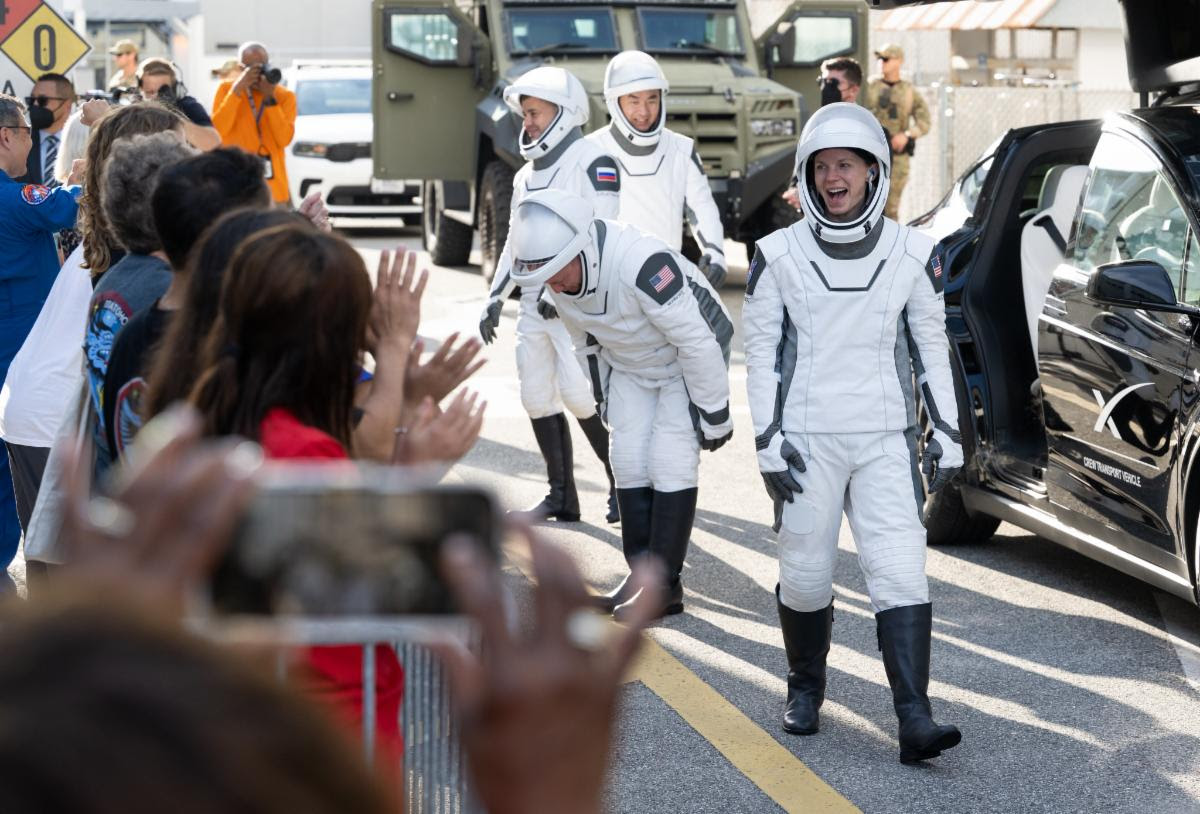
photo courtesy of NASA
the staff of the Ridgewood blog
KENNEDY SPACE CENTER, FL — SpaceX launched its eleventh operational astronaut mission for NASA, known as Crew-11, on August 1, 2025, sending four astronauts on a six-month journey to the International Space Station (ISS) aboard the Crew Dragon Endeavour.
🚀 Crew-11 Lifts Off After Weather Delay
The Falcon 9 rocket carrying Crew Dragon Endeavour lifted off from Launch Complex 39A at NASA’s Kennedy Space Center at 11:43 a.m. EDT (1543 GMT). This marks the sixth flight for Crew Dragon Endeavour, setting a reuse record for the spacecraft under NASA’s Commercial Crew Program.
Originally scheduled for July 31, the launch was postponed due to weather concerns, specifically low clouds that forced a last-minute scrub just before liftoff.
🎯 Historic Last Landing at LZ-1
Nearly eight minutes after liftoff, the Falcon 9 booster returned safely to Earth, touching down at Landing Zone 1 (LZ-1) at Cape Canaveral Space Force Station. This historic landing marks the final booster recovery at LZ-1, which is being retired to make way for future commercial development by Phantom Space and Vaya Space.
SpaceX will continue landings at Landing Zone 2 (LZ-2) and other facilities.
👨🚀 Meet the Crew-11 Astronauts
The multinational Crew-11 team includes:
-
Zena Cardman (NASA) – Commander | First spaceflight
-
Mike Fincke (NASA) – Pilot | Fourth mission to space
-
Kimiya Yui (JAXA) – Mission Specialist | Second mission
-
Oleg Platonov (Roscosmos) – Mission Specialist | First spaceflight
Cardman, who was originally scheduled for Crew-9, was reassigned due to spacecraft reallocation when NASA had to accommodate a delayed return for astronauts Butch Wilmore and Suni Williams aboard Boeing’s Starliner.
Veteran astronaut Fincke expressed his excitement to fly with first-time space travelers, saying:
“I remember how moving it was, and how breathtaking it was for me, and I want to share their joy in that.”
🔧 Mission Goals and Duration
Once docked, the Crew-11 team will relieve the Crew-10 astronauts, who launched in March 2025, and ensure a seamless transition aboard the ISS. NASA uses overlapping missions to maintain uninterrupted scientific research and operational stability.
Crew-11 will spend approximately six months aboard the ISS, with a possibility of extension to eight months, according to NASA ISS Program Manager Dana Weigel.
Their scientific duties include:
-
Simulating lunar landings near the moon’s south pole
-
Studying microgravity’s impact on astronaut eyesight
-
Observing plant cell division in space
-
Producing human stem cells and generating on-demand nutrients
📅 What’s Next?
-
Crew-11 docking is scheduled for 3 a.m. ET (0700 GMT) on Saturday, August 2.
-
Soyuz MS-28 mission will arrive in November 2025, carrying three more astronauts.
-
A Northrop Grumman robotic cargo ship is also expected during Crew-11’s stay.
This launch marks the 12th overall crewed flight under NASA’s Commercial Crew Program, which includes both SpaceX Crew Dragon and Boeing Starliner spacecraft.
Take the Wall Street Walking Tour https://www.facebook.com/unofficialwallstreet #WallStreetTours,#FinancialDistrictExploration, #ExploreWallStreet, #FinancialHistoryTour, #StockMarketExperience, #FinancialDistrictDiscovery, #NYCFinanceTour,#WallStreetAdventure
